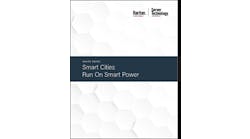The Digital Crossroad wholesale data center says it has signed a leading content delivery network (CDN) as a client for its DX-1 data center in Hammond, Indiana. It’s the first publicly-announced customer for the project, which opened in October.
DX-1 is a 105,000 square foot, 20-megawatt (MW) data center on the shore of Lake Michigan, about 12 miles east of Chicago. The site is a former State Line electric plant, which was designed by Thomas Edison and served the Midwest for much of the 20th century. Digital Crossroad worked with state and local government officials to repurpose the 77-acre site as a data center campus.
Digital Crossroad (DX) didn’t name the client, but said its will provide momentum for the new facility, which is optimized for hyperscale operators.
“This is a great win,” said John Greenwood, Chief Strategy Officer at Digital Crossroad. “Having a marquee edge computing firm place their trust and mission-critical IT infrastructure in our data center validates the hard work our team put in to making this site the go-to data center destination in the Chicagoland market.”
“We’re thrilled to welcome this premier CDN to Digital Crossroad and Northwest Indiana. We have the people, technology, and strong public-private relationships to support their growth and success,” said Thomas Dakich, Managing Member with DX.
The Digital Crossroad data center campus is in a Designated Opportunity Zone, with tax incentives including 0% sales and use tax exemption for up to 50 years on electricity, rent and data center IT equipment. The tax breaks were passed in 2019 by the Indiana legislature to boost the state as a destination for data centers.
The operators of Digital Crossroad are hoping the tax breaks will appeal to customers seeking capacity in the Greater Chicago market, which has clusters of data centers in both Downtown Chicago and in the Suburban Chicago market to the West near O’Hare Airport. The new campus offers another option to the East of the city.
DX-1’s cooling system uses a combination of outside air and water from Lake Michigan to reduce the need for artificial refrigerants. Air economizers use the cool external air, while a closed-loop water system can draw cold Lake Michigan water directly into liquid-cooled cabinets to support in-row cooling applications. The company says the facility has diverse dark fiber access to key regional carrier hotels with sub 4 millisecond (ms) round-trip latency.






